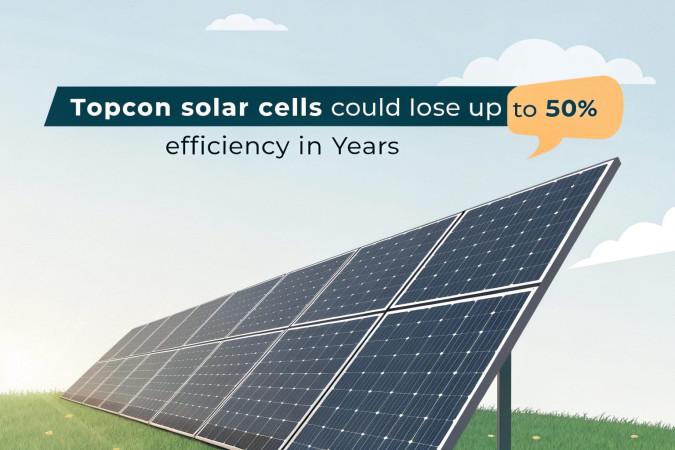
Follow India Renewable Energy News on WhatsApp for exclusive updates on clean energy news and insights
TOPCon & Degradation: Is Efficiency Coming at the Cost of Reliability?
Mar 16, 2025
Industry Shifts Towards High-Efficiency Solar Modules
As the solar industry advances toward higher efficiency technologies, TOPCon (Tunnel Oxide Passivated Contact) has emerged as a leading innovation. However, concerns are surfacing about its long-term reliability, with some experts questioning whether the drive for efficiency is compromising module durability.
Potential Degradation Risks in TOPCon Modules
Recent research from the University of New South Wales (UNSW) suggests that certain next-generation solar technologies, including TOPCon and HJT (Heterojunction), could experience higher rates of degradation due to environmental factors. Reports indicate that these modules may be susceptible to corrosion, light-induced degradation (LID), and encapsulant-related failures, leading to efficiency losses over time.
A study published in Solar Energy Materials and Solar Cells found that exposure to acetic acid—a common byproduct of module aging—could reduce the peel force of TOPCon cells from 3.94 N to 2.67 N, leading to efficiency losses of up to 4.38% on the front side and 2.16% on the rear side.
Advancements in TOPCon Technology Addressing Reliability Issues
Despite these concerns, industry experts argue that modern advancements have significantly improved the durability of TOPCon modules. Recent technological enhancements, such as better passivation layers, optimized contact materials, and the introduction of Leco pastes that prevent aluminum-related corrosion, have helped stabilize long-term performance.
Leading solar manufacturers have also made substantial progress in reducing degradation rates, with new-generation TOPCon modules now exhibiting an annual efficiency loss of just 0.3%-0.4%, which is comparable to or even better than PERC (Passivated Emitter and Rear Cell) technology.
Industry Experts Weigh In
Several solar professionals have pointed out that concerns about TOPCon degradation may be based on outdated data. They highlight that:
- TOPCon technology has evolved significantly, addressing early-stage reliability challenges.
- IP68-rated modules are designed to prevent water and dust ingress, reducing the risks of environmental damage.
- The transition from polycrystalline to mono-PERC faced similar skepticism in the past, but mono-PERC is now an industry standard.
Some experts also emphasize that field performance data should take precedence over lab studies, arguing that real-world conditions and long-term monitoring provide a more accurate picture of module reliability.
The Future of Solar: What Lies Ahead?
With N-type technologies such as TOPCon and HJT gaining traction, the focus should remain on a balance between efficiency and long-term stability. While the higher initial efficiency of TOPCon is attractive, buyers must also evaluate reliability factors before making a transition.
As technology continues to evolve, the solar industry is expected to refine materials and designs further, ensuring that the push for higher efficiency does not come at the cost of durability.